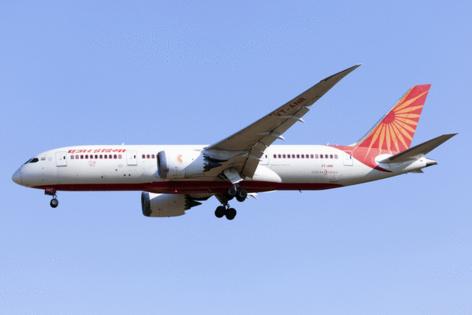Problem on another Air India flight reignites worry about Boeing 787
Published in Business News
Pilots in India are calling for inspections of Boeing’s 787 planes after a backup power system deployed on a recent Air India flight, a sign there may have been a problem with the plane’s hydraulic or electric systems.
The backup power system — called the ram air turbine, or RAT — is the same one that deployed just before an Air India 787 crashed in Ahmedabad, India, in June, killing 241 of the 242 people on board and 19 people on the ground.
India’s civil aviation authority is still investigating the deadly crash, but said in a July preliminary report that it did not recommend any actions related to Boeing’s 787 Dreamliner or the GE Aerospace engines that power it.
Still, some pilots’ organizations and safety advocates have called for more inspections to ensure there is not a problem with the electric or hydraulic systems on Boeing’s planes.
On Saturday, those calls were amplified when the ram air turbine deployed on an Air India Boeing 787 flying from Amritsar, India, to Birmingham, England.
The plane landed safely and an investigation is underway. But the incident reignited concerns that regulators, airlines and manufacturers have not done enough to prevent another deadly crash.
“We have been requesting that all Boeing 787s flying in the country should be tested on the electrical system,” Captain Charanvir Singh Randhawa, president of the Federation of Indian Pilots, said in a video interview with an Indian news outlet Sunday.
“The agencies should be proactive, so a further accident is avoided. That is safety,” he said. “You must check the Boeing 787.”
Boeing could not be immediately reached for comment Monday.
In the interview, Randhawa said the Federation of Indian Pilots had learned the ram air turbine deployed on the flight to Birmingham because there was a “fluctuation” in the plane’s bus power control unit, a system that monitors and manages the plane’s electric systems.
“I have never heard of a RAT getting deployed on any aircraft where everything is normal,” Randhawa said. “This incident should be taken very seriously.”
He related the incident to the deadly Ahmedabad crash this summer. In that case, accident investigators found the RAT deployed during the flight’s initial climb. The aircraft crashed seconds later.
It’s still not clear what caused the accident but investigators said two switches that send fuel to the plane’s engines were flipped off, causing the plane to lose thrust and slam into a medical building.
The cockpit voice recorder indicated one pilot asked the other why he had cut power to the engines. The responding pilot said he had not done so.
Those details in the preliminary report led regulators and pilots’ advocacy groups, including the Federation of Indian Pilots, to caution against drawing conclusions too soon or placing the blame on the pilots. The Federation of Indian Pilots accused investigators of relying on “selectively paraphrased cockpit voice records to suggest pilot error” in the preliminary report.
On Sunday, Randhawa said the group is “quite convinced that it could be an electrical problem that led to the crash” in Ahmedabad, adding that they will know more when accident investigators release their final report.
©2025 The Seattle Times. Visit seattletimes.com. Distributed by Tribune Content Agency, LLC.












Comments